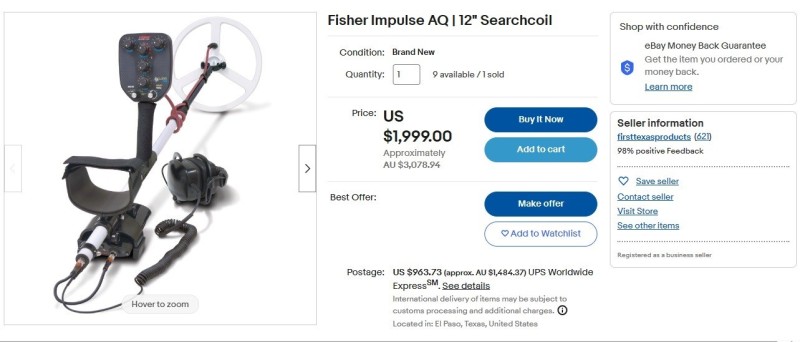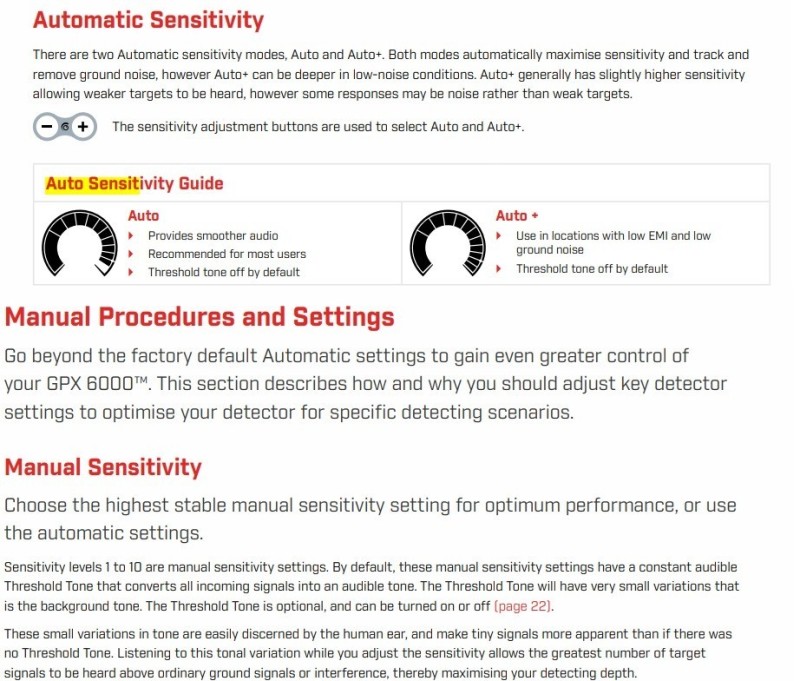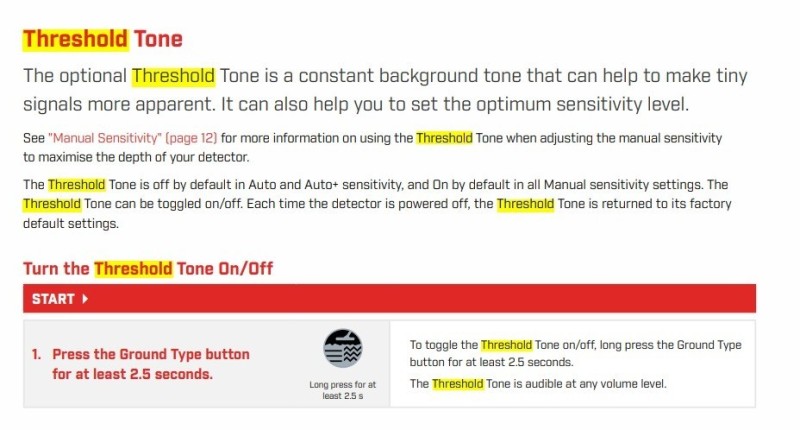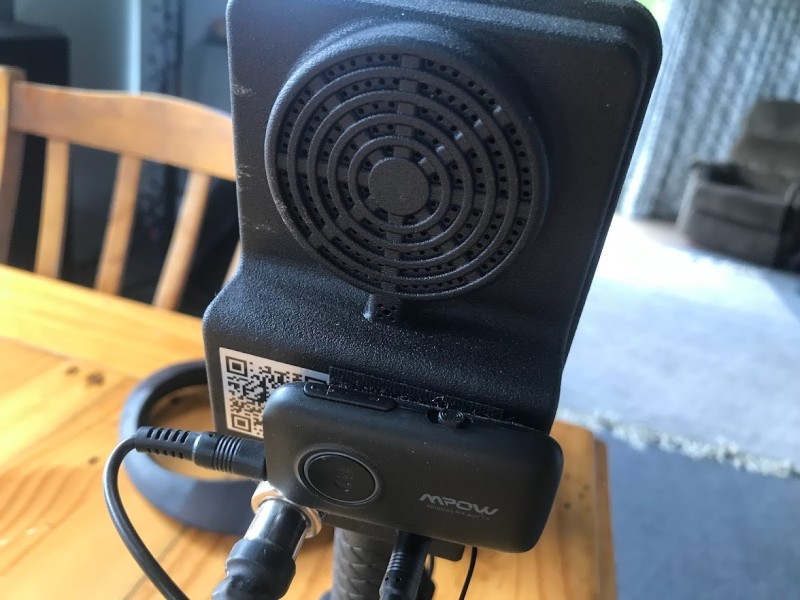-
Posts
5,314 -
Joined
-
Last visited
-
Days Won
140
Content Type
Forums
Detector Prospector Home
Detector Database
Downloads
Everything posted by phrunt
-
This is what happens when China's housing market collapses, the citizens now going for the safe haven of gold for their investment driving up the price.
-
New AQ Ltd $1300
phrunt replied to The_Stalker's topic in First Texas - Bounty Hunter, Fisher & Teknetics
-
That's the stores fault more than anything, a good store would educate their staff on the products they sell, the retail store I once was involved with never once would allow a sales person onto the floor that wasn't educated on the product they're selling. There is no reason a sporting goods store couldn't have staff as well versed on detectors as many (not all) dealers are. If manufacturers want to sell their goods to such stores, they should send staff in for training days, provide the people some pizzas and drinks and get to work teaching them about the products they will be selling, all very standard practice in retail stores around Nz/Aus. I don't see any reason the staff in these stores couldn't know enough to sell the right product to the customer to suit their needs like they do for the fishing and other sporting goods they sell, it's not rocket science.
-
I think that's just a doctored image someone thinks it will look like that? It would be too heavy for a VLF with that design would it not?
-
I think what you were seeing was the auto ground tracking going out of whack Jason, I can replicate it by going over a big bolt or something a few times then attempting to find a small nugget, it takes a while to recover, and yes, a quick way about it is a factory reset. You can confuse the detector, I don't think its sensitivity is changing, I think it's all to do with the ground balance. I guess high EMI is like a target to it or even some ground, so it's trying to balance to the EMI and going all funky from trying to do that. I wish it had a way to fix the balance, a feature it is lacking that it would greatly benefit from. It's funny though, the 6000 doesn't have fixed and people want it, the Algo has fixed and people complain it's not auto 😛 I think it's best to have both.
-
I hope so, I'm not sure they have any interest in doing so though, they discovered that selling cheaper models though big box stores brings in lots of money without the need to develop real new models and the costs involved. They can continue doing this for years with the detector designs they've got already, they have reached the point they've made the F19 an entry level Bounty Hunter type machine, eventually the F75 and T2 will make their way into being Bounty Hunter models too as the low-end market is getting more competitive from the other brands releasing very good models in these price ranges.
-
Algoforce are joining Minelab at Minelab's game, patenting everything and good on them, a third patent has appeared on their website now, relating to an adaptive display on a metal detector, basically a screen that auto adjusts to the ambient light. Patents New method for detecting fast time constant targets using a time domain metal detector (Patent No. AU2023900847A0) Metal detector with ambient sound control (Patent No. AU2023900934A0) Handheld underground metal detector with adaptive display (Patent No. AU2023901230A0) The good news about this one is the Algoforce E1500 doesn't have this feature, it's obviously something going on the next model when it comes to fruition as the E1500 would need a light sensor for it to work, good on them, two can play that game. The current Algoforce screen is better in sun than any other screen I've seen on a metal detector, so once it has adaptive on it, it's really going to be well beyond anything else in different light levels.
-
yep, little has changed, that's why they put an Auto + on there. 🙂 What I find intriguing is they clearly state using a threshold can make finding weaker target signals easier which means more chance of small gold or deeper targets than no threshold, yet for those that use Auto and Auto + the threshold is off by default, and to make it worse, even if you turn it on which you have to do in each Auto mode individually, each time you power cycle your detector you have to turn the threshold on again. It's like they think the people that are likely to use auto are the same type of people that would prefer to hunt with no threshold, make of that what you will. Fortunately for me I don't use the Auto modes, or I'd be nagging Minelab to release a firmware that saves your last used threshold configuration setting.
-
You have to click on the little chain link on the top row of function icons on your edit box and paste the link into there, you can give it a name also, you can't do it the previous way of just pasting links. Still works a treat, and not much harder to do.
-
Using The 7000 To Pick Up The Scraps Missed By The 6000
phrunt replied to Lesgold's topic in Detector Prospector Forum
yep, the 4 minute 40 second mark you have a screamer that just disappears with a small amount of soil movement. Once you're aware of it and just know to flatten out any soil it isn't an issue, but it sure goes from hero to zero with the smallest amount of dirt. You're training the little tacker well; he'll be going at it himself in no time and be hooked! He certainly has a keen eye for it, finds it in the scoop easily by eye. -
I like reading the patents, although they go way over my head some of it can be translated to English. The hardest part for them seems to be proving their "invention" isn't a prior art and justifying the fact is in indeed new, they cover themselves often too for future detectors by saying things like although this method is used in PI detectors, it is possible we could adapt it in the future for VLF detectors or something along those lines, so if someone in the future adapts it for another purpose, they can fall back on their patent to prevent it being done. They've even got their patent for the GPX fine gold technique patented to cover things like walk through and detectors for kitchens to recover tableware dumped into the bin by mentioning they could adapt it for that in the patent application. They probably have no intetions of ever doing so, but don't want anyone else to be able to either. It's probably someone's job just to word these documents to give them the best protection of their patent possible to prevent future products by other manufacturers.
-
Garrett AT Gold Not On Garrett.com???
phrunt replied to Jeff McClendon's topic in Garrett Metal Detectors
Still on the site, just not listed in the store. AT Gold Detector | Underwater Gold Metal Detector (garrett.com) I should dust off my AT Gold, haven't used it in ages. -
Fisher Impulse AQ Now A Retail Model?
phrunt replied to phrunt's topic in First Texas - Bounty Hunter, Fisher & Teknetics
I wonder if they gave up on development, but wanted return on what they'd already invested so are just producing it as it were, then they need not spend any further money on it. -
When you dive deeper into the patents for the various detectors many are shared between models. The above are the 6000 patents, mostly all older patents except the top one on the list which was a 2019 submission, it relates to shielding in a coil and electronics related to that. The second one down is shared with the SDC 2300. The 3rd one is also shared with the SDC 2300. The 4th one is shared with the GPX 4500/5000 The 5th and last one hidden away at the bottom of the list, also dated quite old first submitted in 2016 is likely the secret sauce to the GPX 6000 over the SDC, a new signal processing technique. It's not shared with any other detector. US10969511B2 - Signal processing technique for a metal detector - Google Patents So, while it does appear the GPX 6000 is just a pumped up SDC with nothing overly new it does have some new technology in it that was good enough to patent, although Minelab would patent their lunch ladies home-made tomato sauce for their canteen pies. The new shielding technique I think is evident too, how good is the 6000 near power lines compared to the prior GPX series. So while Geosense seems nothing more than Auto sensitivity combined with Auto Ground tracking, the secret to the 6000 is not so much Geosense, but the new signal processing technique from the 2016 patent. It goes to show how long they work on detectors though, a 2016 patent being the secret sauce, and they likely worked on it for years before it was a final product for patenting becomes a detector released in 2021. It does make some of the smaller mistakes they make like twisting shafts seem rather crazy when years go into developing the electronics and a couple of days slapping together a shaft that should do the trick. While it shares a lot of DNA with the SDC, more so than the earlier GPX, it's not just an SDC upgrade using all existing technology.
-
Celebrating 60 years of excellence!🤩 Visit Garrett Direct to save big during our Founders’ Week sale. Use Garrett60 code from April 1 through April 7 to save on your order. Check back during the week, as different offers will be available through the week. For all orders placed on Monday, April 1, and Tuesday, April 2, of $50 or more, receive a FREE Mossy Oak/Jase Robertson camo cap! Happy Hunting!😁 Garrett Metal Detectors | 972-494-6151 | sales@garrett.com Happy Birthday Garrett, looking forward to seeing what the weather brings!
-
You lost me at new technology from Fisher. 😉
-
Detech Australia has it listed as a standard mono coil, they say the size is 11x6", standard mono coil so weird the original Detech get it all wrong. I'd trust the Aussies over the original Detech site that's got quite a few mistakes on it, plus Detech Australia would never get away with wrong advertising, illegal there for a start.Detech Elliptical Searchcoils | Detech Australia | Australia (detech-metaldetectorsaustralia.com.au) The only spirals are the Ultra sensing mono's and Ultimate DD's. I had the 15x8" of the standard mono coils and didn't like it at all, in fact I gave it away, rare for me to even get rid of metal detecting stuff at all, so to give away a coil..... You may have dodged a bullet, the Spirals are good though. The smaller mono might be better than my 15x8" was though.
-
Yep, the only recent patent on it was under his name. US11454736B2 - Metal detector - Google Patents But even the earlier patents used for the 6000 from 2013 were also under his name. This 2012 fast time constraint target detection patent was for the SDC, but it's also used on the GPX 6000 and was under Bruce Candy also. We can go right back to 2006 patents like this one used on the GPX 6000 also by Bruce. This 2016 patent used on the 6000 is also under Bruce. Basically, every single patent for technology in the 6000 is under the name Bruce Candy so I would say he had a lot to do with it, all older patents used also on other detectors except the first one which was is the only one not used in other detectors, so far, it's exclusive to the 6000.
-
Yes, it can't be too far off, you can tell its a big event for them, it even has its own website.
-
Probably a good move, it will be just as sensitive if not more so to smaller targets.
-
Yep, doesn't reach expected full charge, Common problem, nothing to worry about and it can be a miniscule difference between full and not full and even full isn't really full, happens all the time with all sorts of stuff. Sometimes if you unplug it, plug it in and let it charge a bit more, it might make it, or do that a few times, either way, doesn't make a difference other than its better for your battery to not be full so just unplug it and use it. I think the people that make some products resolve this problem in firmware, some even make firmware updates to "fix" this problem, when really, they're not fixing it, they're just hiding that it happens. I've got new headphones from another detector manufacturer that have never once finished charging since new, they flash forever yet they still work the expected amount of time. If they see enough complaints about it, they may do a firmware update to hide it happens. If it should be charged, just start using it, don't try to unplug and plug it in and force that extra bit into it, it may satisfy you but it's not great for your battery. An annoyance but unless you notice a run down in time it operates from what is expected, I wouldn't worry. Some interesting reading. Even when your battery is at 100 percent, there’s still room for some more charge True There is more juice in your smartphone battery than the percentage displayed suggests, but if you used that juice you’d end up dramatically reducing the overall lifespan of the battery. At the crux of this problem is a delicate trade-off played by manufacturers. Increasing the available charge within a battery reduces the number of times that battery can be charged and discharged without being damaged internally. To make batteries last for hundreds or thousands of charge cycles, manufacturers place limits on the amount of juice that batteries can discharge. To understand why, you need to know a little about how batteries work. The guts of most lithium-ion batteries, like the ones in smartphones, laptops, and electric cars, are made of two layers: one made of lithium cobalt oxide and the other of graphite. Energy is released when lithium ions move from the graphite layer to the lithium cobalt oxide layer. When you charge up a battery, you’re simply shifting those lithium ions back the other way—out of the lithium cobalt oxide layer and back to the graphite. This is where we get to the problem with battery life and charge cycles. Shift too many of those lithium ions out of the lithium cobalt oxide layer, and the whole structure of the layer messes up. “The atomic structure of the material actually falls apart if you remove all that lithium,” says Kent Griffith, an assistant professor specializing in energy storage at the UC San Diego. So while it is possible to charge a battery beyond 100 per cent, the only way to do that is to pull out more of those crucial lithium ions. “It’d be like pulling all of the supports out of the floor of a building,” Griffith says. You could get the lithium ions out, but good luck putting them back once you’ve messed up that internal structure. That’s why manufacturers set limits on the amount of charge in their batteries. Most of the time, they’re set so only around half of the lithium in the lithium cobalt oxide layer is removed during one full charge. “Your battery could give you more charge if you went beyond removing half of the lithium, but you wouldn’t be able to do that very many times.”
-
yes, they locked down their Bluetooth LE to only work with their headphones. 😞 Bluetooth transmitters are the way to go anyway, so in a way the Algoforce is good, why pay the big bucks for a transmitter incorporated into a detector when it rapidly becomes outdated in the fast evolving area of Bluetooth and Wireless technology, stick a cheap transmitter on with the latest technology and use whatever new headphones product you want. Sometimes less is more, with the Algo I can have the latest and greatest wireless audio without having to pay big money for it on the original purchase, and can upgrade it whenever a new better version comes out. So many people are already doing this with their Manticore to use headphones they want to use.
-
I believe a buzzword for auto sensitivity combined with auto ground tracking, so nothing really, Gold Monster DNA, we saw it there first 🙂, well... the CTX has it too, but first in a gold machine. Not the only feature I think likely borrowed from the CTX.
-
The only new patent, well newish was a 2019 patent for the GPX 6000, the others are resubmitted older patents, their original dates listed above in the field. This is the newish 2019 patent used for the 6000. Although it's for a coils screening from what I can see with my limited understanding so the 6000 isn't using anything new that required a patent for the actual detector from what I can see. There are 5 individual original patents, many from very early years and resubmitted/amended so it's showing as 8. Interestingly Geosense never made it onto their "key technologies" when even their Pro-Find pin pointers anti interference technology did..... and surely, they're embarrassed by that pinpointer.











